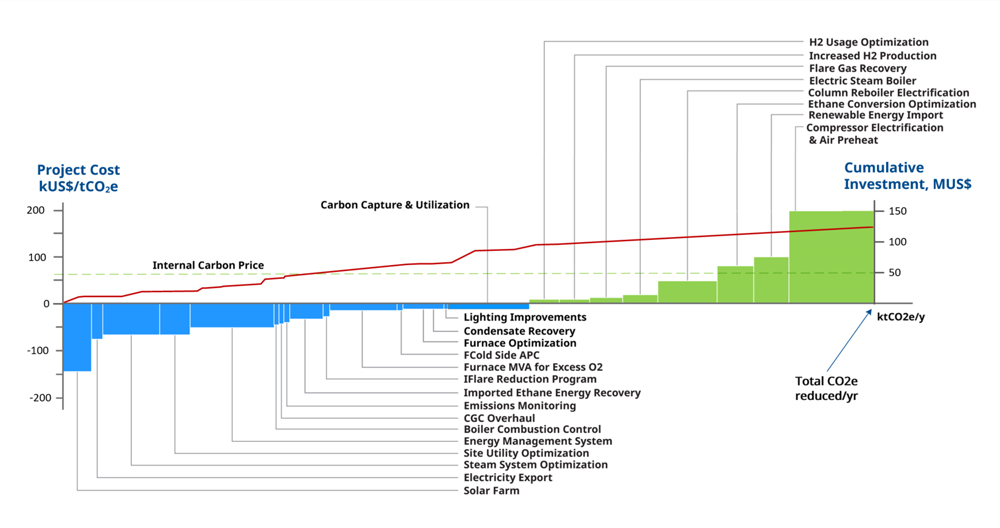The journey to Net Zero is a significant challenge for many manufacturers and producers. Emerson’s Marcelo Carugo and Pete Sharpe write in a Hydrocarbon Processing article, Planning a practical path to net-zero:
Many companies around the world and across the size spectrum have committed to aggressive carbon-neutral targets and are now looking to their production sites for practical plans on how to achieve these goals.
Marcelo and Pete open the article by highlighting the usefulness of marginal abatement cost curves (MACC), which help prioritize projects by:
…ranking projects based on their cost per ton of carbon dioxide (CO2) abated and the net emissions reduction achieved.
The curve plots the project costs per ton of CO2-equivalent (CO2e) versus the emissions reduction. Once plotted, develop a strategic plan:
…that evaluates risks for various implementation scenarios to develop an overall execution plan.
Some examples of these projects include:
- Carbon capture, utilization and storage (CCUS)
- Greenhouse gas reduction
- Energy storage
- Electric transportation
- Power-to-X (P2X)
- Recycling
- Renewable fuels
- Renewable power.
Some projects can have a positive net present value (NPV) that can improve energy usage, production yields, reliability, etc., and can be justified based on the financial returns. Other projects:
…may not show a positive NPV but can be justified based on the CO2e emissions reduced. A CCUS project is a prime example.
Risk assessments must be factored in when developing the sustainability plan to execute the prioritized projects. Some considerations include:
- Availability of technology: Many technologies required to achieve true net-zero have not been commercialized, so timing and efficacy remain unknown.
- Reliability of technology: New plants with new designs are inherently more likely to have reliability issues. For example, what happens when the CCUS unit is down?
- Supply chain: Forecasting future trends in feedstock type, quality and availability is difficult.
- Power sources: The timing, cost, availability and storage of green electricity are additional sources of uncertainty.
- Carbon taxes and credits: Major implications remain around future carbon taxes, carbon market pricing and government regulations.
- Climate change: What will be the effect of climate change on energy needs, pricing, power sources and product demand?
They highlight tools such as Aspen Fidelis, which help prioritize spending decisions while accounting for all functions impacted by simulating scenarios to identify unquantified risks to overall plant performance and revenue.
Read the article for more on this project planning methodology and the use of strategic planning tools to drive your net-zero journey forward. Visit the Industrial Software & Solutions section on Emerson.com for additional ways to improve business performance.







